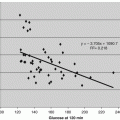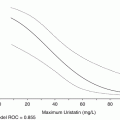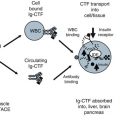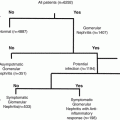Parameter
Control group
Affect group
P-value, affected vs. controla,f
All
Male
Female
All
Male
Female
All
Male
Female
–
n = 133
n = 54
n = 79
n = 55
n = 25
n = 30
–
–
–
–
(n, %)
(n, %)
(n, %)
(n, %)
(n, %)
–
–
–
–
Smokers,
34 (25.6 %)
22 (40.7 %)
12 (15.2 %)
35 (63.6 %)
17 (68.0 %)
18 (60.0 %)
<0.005
0.02
<0.005
Hypertensiveb
27 (20.3 %)
13 (24.1 %)
14 (17.7 %)
50 (90.9 %)
22 (88.0 %)
28 (93.3 %)
<0.005
<0.005
<0.005
Hyperlipidemicc
55 (41.4 %)
21 (38.9 %)
34 (43.0 %)
45 (81.8 %)
19 (76.0 %)
26 (86.7 %)
<0.005
<0.005
<0.005
Diabetic
9 (6.8 %)
3 (5.6 %)
6 (7.6 %)
17 (30.9 %)
7 (28.0 %)
10 (33.3 %)
<0.005
0.01
<0.005
Obesityd
30 (22.6 %)
11 (20.4 %)
19 (24.1 %)
30 (54.5 %)
11 (44.0 %)
19 (63.3 %)
<0.005
0.03
<0.005
CHF patients
3 (2.3 %)
2 (3.7 %)
1 (1.3 %)
3 (2.3 %)
2 (3.7 %)
1 (1.3 %)
<0.005
0.01
0.48
Have had AMI
1 (0.8 %)
0 (0.0 %)
1 (1.3 %)
6 (10.9 %)
4 (16.0 %)
2 (6.7 %)
<0.005
<0.005
0.13
Anti-imflammatory medicationse
26 (19.5 %)
14 (25.9 %)
12 (15.2 %)
34 (61.8 %)
16 (64.0 %)
18 (60.0 %)
<0.005
<0.005
<0.005
Anti-hypertensive medicationsb, e
20 (15.0 %)
10 (18.5 %)
10 (12.7 %)
37 (67.3 %)
13 (52.0 %)
24 (80.0 %)
<0.005
<0.005
<0.005
Lipid-reducing medicationsc, e
10 (7.5 %)
5 (9.3 %)
5 (6.3 %)
26 (47.3 %)
9 (36.0 %)
17 (56.7 %)
<0.005
<0.005
<0.005
Anti-thrombotic medications
2 (1.5 %)
2 (3.7 %)
0 (0.0 %)
12 (21.8 %)
6 (24.0 %)
6 (20.0 %)
<0.005
0.01
<0.005
Uses nitroglycerine
10 (7.5 %)
6 (11.1 %)
4 (5.1 %)
23 (41.8 %)
10 (40.0 %)
13 (43.3 %)
<0.005
<0.005
<0.005
Table 9.2
Cohort diagnostic risk factor characteristics
Parameter | Control group | Affect group | P-value, affected vs. controla | ||||||
|---|---|---|---|---|---|---|---|---|---|
All | Male | Female | All | Male | Female | All | Male | Female | |
– | n = 133 | n = 54 | n = 79 | n = 55 | n = 25 | n = 30 | – | – | – |
– | X (sd) | X (sd) | X (sd) | X (sd) | X (sd) | X (sd) | – | – | – |
Age years | 50.2 (8.9) | 51.4 (9.4) | 49.4 (8.4) | 56.1 (9.2) | 53.9 (9.1) | 57.9 (9.0) | <0.005 | 0.02 | <0.005 |
Weight lbs | 171.4 (51.4) | 187.9 (45.8) | 160.1 (52.3) | 193.2 (42.0) | 211.0 (47.6) | 178.4 (30.3) | 0.01 | 0.04 | 0.03 |
Height in | 66.7 (4.1) | 69.6 (2.9) | 64.7 (3.5) | 65.7 (4.5) | 69.3 (3.9) | 62.7 (2.1) | 0.15 | 0.70 | <0.005 |
BMIb | 27.0 (7.2) | 27.2 (5.8) | 26.8 (8.1) | 31.4 (5.7) | 30.7 (5.9) | 31.9 (5.6) | <0.005 | 0.01 | <0.005 |
Systolic BP mmHg | 131.1 (10.1) | 131.0 (12.2) | 131.2 (8.4) | 151.1 (27.5) | 152.1 (30.0) | 150.2 (25.7) | <0.005 | <0.005 | <0.005 |
Diastolic BP mmHg | 72.9 (9.4) | 74.2 (10.7) | 72.0 (8.3) | 84.4 (14.9) | 87.9 (14.1) | 81.5 (15.1) | 0.005 | <0.005 | <0.005 |
Total cholesterol (mmol/L) | 202.0 (45.2) | 198.9 (45.5) | 204.2 (45.2) | 202.0 (45.2) | 194.1 (44.1) | 204.5 (54.8) | 0.76 | 0.67 | 0.98 |
Triglycerides (mmol/L) | 129.2 (58.8) | 133.1 (75.7) | 126.6 (44.1) | 133.6 (56.1) | 127.8 (62.9) | 138.4 (50.4) | 0.64 | 0.76 | 0.23 |
HDL cholesterol (mmol/L) | 46.5 (16.6) | 44.6 (14.5) | 47.8 (17.8) | 42.5 (13.3) | 43.5 (15.9) | 41.6 (10.9) | 0.11 | 0.76 | 0.03 |
LDL cholesterol (mmol/L) | 126.7 (45.5) | 124.1 (56.2) | 128.5 (36.7) | 126.3 (41.8) | 123.2 (39.9) | 129.0 (43.9) | 0.96 | 0.94 | 0.96 |
Lipid ratioc | 4.7 (1.6) | 4.8 (1.7) | 4.7 (1.5) | 5.1 (1.8) | 5.0 (2.0) | 5.1 (1.6) | 0.19 | 0.60 | 0.20 |
(n, %) | (n, %) | n, (%) | (n, %) | (n, %) | (n, %) | ||||
Proteiunuriad | 13 (9.8 %) | 8 (14.8 %) | 5 (6.3 %) | 14 (25.5 %) | 10 (40.0 %) | 4 (13.3 %) | <0.005 | <0.005 | <0.005 |
9.2.4 Statistics Methods
Comparisons (as P-values) between these two groups, again for each sex (and both together) are included. For the qualitative factors (e.g., smoking status) the number, percent and the Clopper-Pearson 95 % confidence interval for the percent are tabulated. The P-value is that for the difference in proportions between the control and affected groups calculated using the normal approximation to the binomial distribution with continuity correction. For the quantitative factors (e.g. age and diagnostic test), the mean and standard deviations (SDs) are tabulated. The P-values are for the difference between each group’s mean assuming a t distribution. Before calculating the t value, the two groups’ SDs are compared using the F distribution. If they were not statistically different, (two-sided, 95 % confidence), the SDs were pooled and the SD of the difference is estimated with the pooled SD. Otherwise, the SD of the difference is estimated from the two separate SDs and its number of degrees of freedom estimated using Satterthwaite’s approximation (rounded down). All P-values are two-sided. Differences between the control and affected groups are deemed statistically significant if the corresponding P-values are less than 0.05. For Bik and the cell counts, exact non-parametric P-values are calculated using the Wilcox on scores (equivalent to the Mann-Whitney U test). For the cell counts, the exact P-values are estimated using a Monte Carlo approximation with 10,000 samples and a random (system clock generated) seed. Again, all P-values are two-sided.
9.3 Results
9.3.1 Correlation to Risk Factors
In Tables 9.1 and 9.2, we compared the demographic and diagnostic risk factor for the controls to patients with stenosis. Patients with stenosis were more likely to be smokers, to be obese by weight or BMI, and to have high blood pressure, be older or diabetics. Of the diagnostic tests evaluated, proteinuria was the most significantly different between the control and affected groups. Proteins in urine are independent risk factor of CVD in essential hypertension (Pontremoli et al. 1997). Lipids were not significantly different as most of the affected population was on lipid-reducing medications. The usage of nitroglycerines, anti-hypertension, anti-inflammatory and anti-thrombotic medications were also significantly more used in the affected population.
Stay updated, free articles. Join our Telegram channel

Full access? Get Clinical Tree








